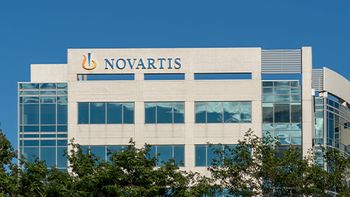
- Pharmaceutical Commerce - October 2022
- Volume 17
- Issue 5
Keys to CGT-Supply Chain Integration
Outlining five network-focused ways industry can support cold chain shipping of advanced therapy products
Across all industries, maintaining supply chains is crucial for functioning effectively. Within the cell and gene therapy (CGT) sector, given that shipments are generally living cells, the management of supply chains is challenging, relying heavily on cold chain logistics. Time pressures are often particularly critical because CGT is often the last treatment option available, prescribed only when standard pathway options have been exhausted, meaning the patients involved are often critically unwell. Additionally, the personalized nature of many therapies requires scrutiny around supply chain tracking, as errors or delays could prove to be fatal. When working within such fine parameters, an integrated supply chain ecosystem can help ease time pressures, reduce errors, and improve automation. At TrakCel, we have identified five common areas where integration can help CGT developers support the cold chain logistics their therapies depend on.
Tracking, monitoring, and excursion flagging
Many cold chain specialist couriers can provide a raft of information about the location and status of a shipment. Some can even give insight into the internal temperature of the shipper in real-time. While this information has the potential to be invaluable, the volume of the data generated can make it difficult to harness its true power, particularly if multiple shipping partners are being used. By integrating all shipping providers with a “hub” system like a cell orchestration platform (COP), this data can be automatically recorded against the drug journey. Workflows can also be built in, to alert users to events that might require action, such as a temperature excursion or a delay.
These alerts can be proactively sent to whichever party in the supply chain needs to act, whether the drug developer, the manufacturer, healthcare provider, or another party. This means that regardless of which stakeholder is due to dispatch or receive a shipment, the information can be directed proactively, in real-time. By reaching further into the supply chain ecosystem by connecting to the COP for scheduling information and the events surrounding a shipment, logistics providers can be better informed. If, for example, a patient is unable to make a cell collection appointment, the COP can prompt to cancel or delay a pending shipment to minimize wasted resource and expense.
Expediting timelines
One of the pressures with cold chain shipping is time, whether it’s a fresh product with a short shelf-life or a cryopreserved one in a shipper with a limited charge period. However, this is magnified in the CGT cold chain, where there’s greater need for an efficient journey to optimize the chance of a good treatment outcome. Integrating key systems within the supply chain journey, such as enterprise resource planning (ERP) systems, manufacturing execution systems (MES), and the COP helps to ensure that courier collections can be made with sufficient advance warning, and delays are also flagged so that they can be minimized. As this happens in, or near to, real-time, the time that is allowed to resolve issues is maximized, reducing the impact on the overall patient journey or instances where product cannot be delivered within critical timelines.
The receiving party details and dispatch information are stored in the COP, as are the rules that might govern a shipment, such as times when there’s customs clearance or a product cannot be received. This can help to prevent errors when scheduling shipping, as workflows can be configured to help users navigate these complex rulesets when scheduling treatments.
Automated booking
Within an integrated digital supply chain landscape, critical tasks and pathways are generally orchestrated by a COP that controls the processes specific to that therapy. This will include critical logistics information that when integrated, reduces what must be manually inputted into logistics booking systems or portals. This not only saves users time but ensures consistency and further reduces the chance of error.
Information that is essential and/or consistent for a particular therapy, shipment type, or site, labeling information and other required details can be set as critical fields and then sent directly by the COP. This direct information transfer to the courier means that there is a guarantee that all parties are seeing the same data rather than outdated or miskeyed information.
In addition to bookings, cancellations can also be requested and sent directly from the COP, informing the dispatcher, courier, and receiver that a shipment has been delayed or postponed so that the relevant actions can be undertaken, and the shipment marked as requiring rebooking.
As digital ecosystems evolve and the CGT market expands, there is potential for the rich data that is gathered by the various systems to drive advanced analytics that will help all parties to manage forecasting and logistics even more finely. This is more of a challenge in a non-integrated system where data is split over multiple systems or paper-records.
Documented COC transfer (quality)
Digitizing logistics means that tracking the chain of custody for a shipment becomes far easier, as the COP will not only record the information in real-time but can dynamically search and report the audit trail of multiple/specific therapy journeys.
This change of custody information can be aligned with quality checks that are verified by either or both parties at the point of transfer. This means that should anything go wrong, it is far easier to track down the point of failure in the supply chain. This has important ramifications not just for quality control processes; in an industry where the cost of goods is extremely high, this can help minimize risk and exposure to supply chain partners when processes that are outside of their control fail.
These handover checks can be set up on a supplier, courier, therapy, or shipment basis, recording the specific information that is required at each point of the process and storing the record as a time-and-date-stamped element of the audit trail.
Workflows for storage and timing
Digital workflows within a connected environment do not have to be limited to the information that is generated by a single system to monitor and safeguard a critical deadline. For example, when managing received or stored samples, information from a courier system relating to the charge life of a shipping container can be overlaid with information from the COP about the key timings of the scheduled events, information from the ERP as to the storage location of the cells at any given point in time, and information from the MES as to when the manufacturing slot for the therapy is scheduled. All of this can combine to create an informed picture as to whether current storage or shipping conditions are suitable or where additional actions are required in order to safeguard cell samples.
These actions can be driven by system-generated prompts to users that trigger at specific points, for example, within hours of the end of the container charge period.
A delicate approach
While the infrastructure is yet to be fully established for cold chain (in advanced therapies), companies such as TrakCel are constantly revising the existing framework and putting in place such processes. The five ways the CGT industry can support cold chain shipping that we have explored are some of the main areas where developers are already reaping the benefits of supporting their logistics with an integrated network of supply chain partners. The fragility of the cargo and time-sensitive nature of CGTs means that the industry must support and maintain the supply chains, especially cold chain, as best it can.
About the Author
Paul Viggers is Chief Commercial Officer, TrakCel.
Articles in this issue
about 3 years ago
Pharmaceutical Commerce - October 2022 Issue (PDF)about 3 years ago
Decisive Moves on the Digital Supply Chainabout 3 years ago
Betting the House on Orphan Drugsabout 3 years ago
Cold Chain Tech Continues to Evolveabout 3 years ago
Building a Robust Cold Chain for CGTsabout 3 years ago
‘Old School,’ New Technologyabout 3 years ago
Building the Cold Chain of the Futureabout 3 years ago
Choosing the Right Monitoring Deviceabout 3 years ago
Global Logistics: A Cold Chain Blueprintabout 3 years ago
On the (New) Edge of TomorrowNewsletter
Stay ahead in the life sciences industry with Pharmaceutical Commerce, the latest news, trends, and strategies in drug distribution, commercialization, and market access.





